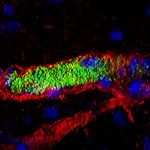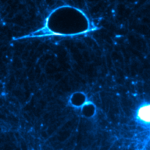Link to Pubmed [PMID] – 26849533
Curr. Opin. Cell Biol. 2016 Feb;38:31-7
Introducing concepts from soft matter physics and mechanics has largely contributed to our understanding of a variety of biological processes. In this review, we argue that this holds true for bacterial pathogenesis. We base this argument on three examples of bacterial pathogens and their interaction with host cells during infection: (i) Shigella flexneri exploits actin-dependent forces to come into close contact with epithelial cells prior to invasion of the epithelium; (ii) Neisseria meningitidis manipulates endothelial cells to resist shear stress during vascular colonization; (iii) bacterial toxins take advantage of the biophysical properties of the host cell plasma membrane to generate transcellular macroapertures in the vascular wall. Together, these examples show that a multidisciplinary approach integrating physics and biology is more necessary than ever to understand complex infectious phenomena. Moreover, this avenue of research will allow the exploration of general processes in cell biology, highlighted by pathogens, in the context of other non-communicable human diseases.





